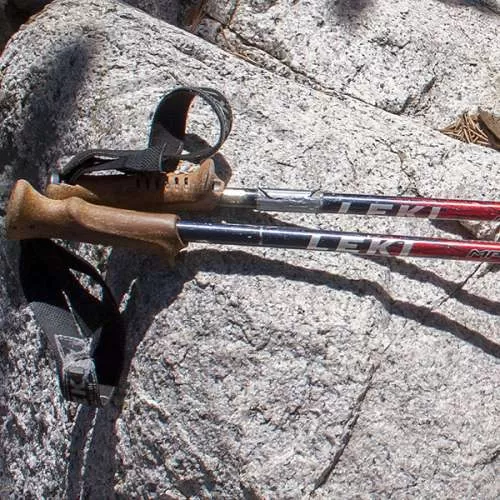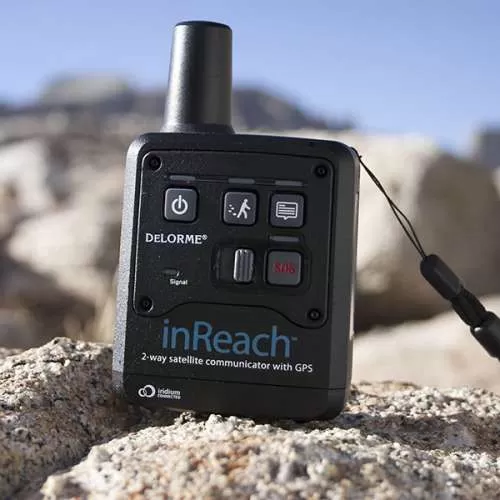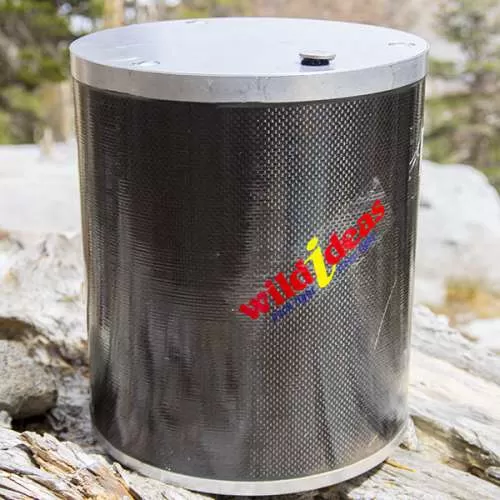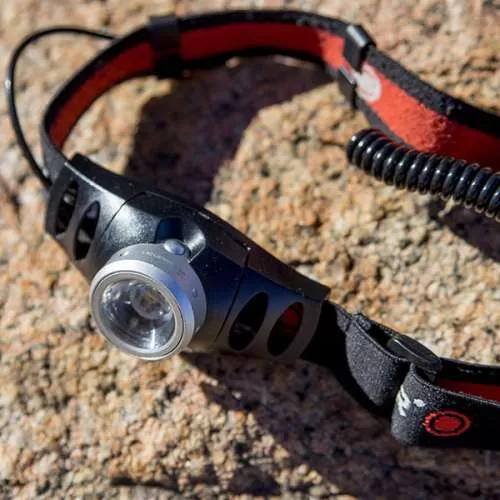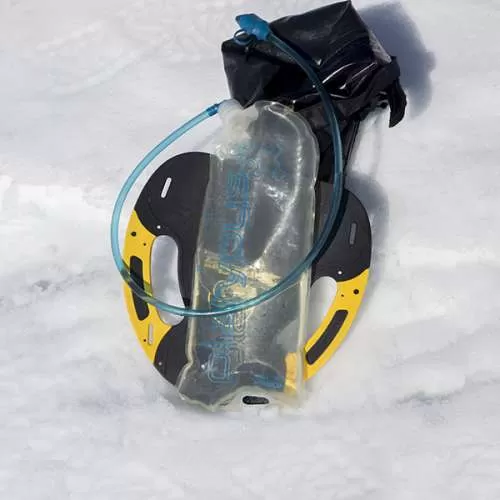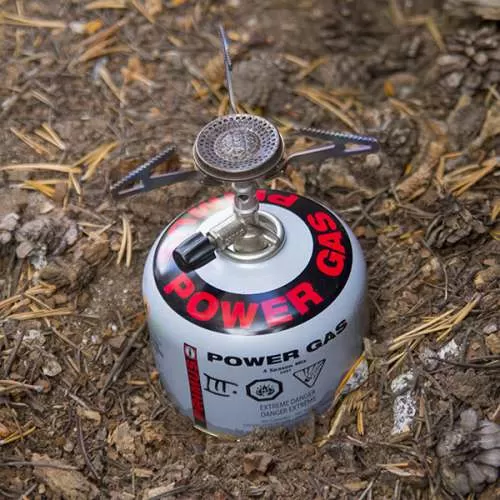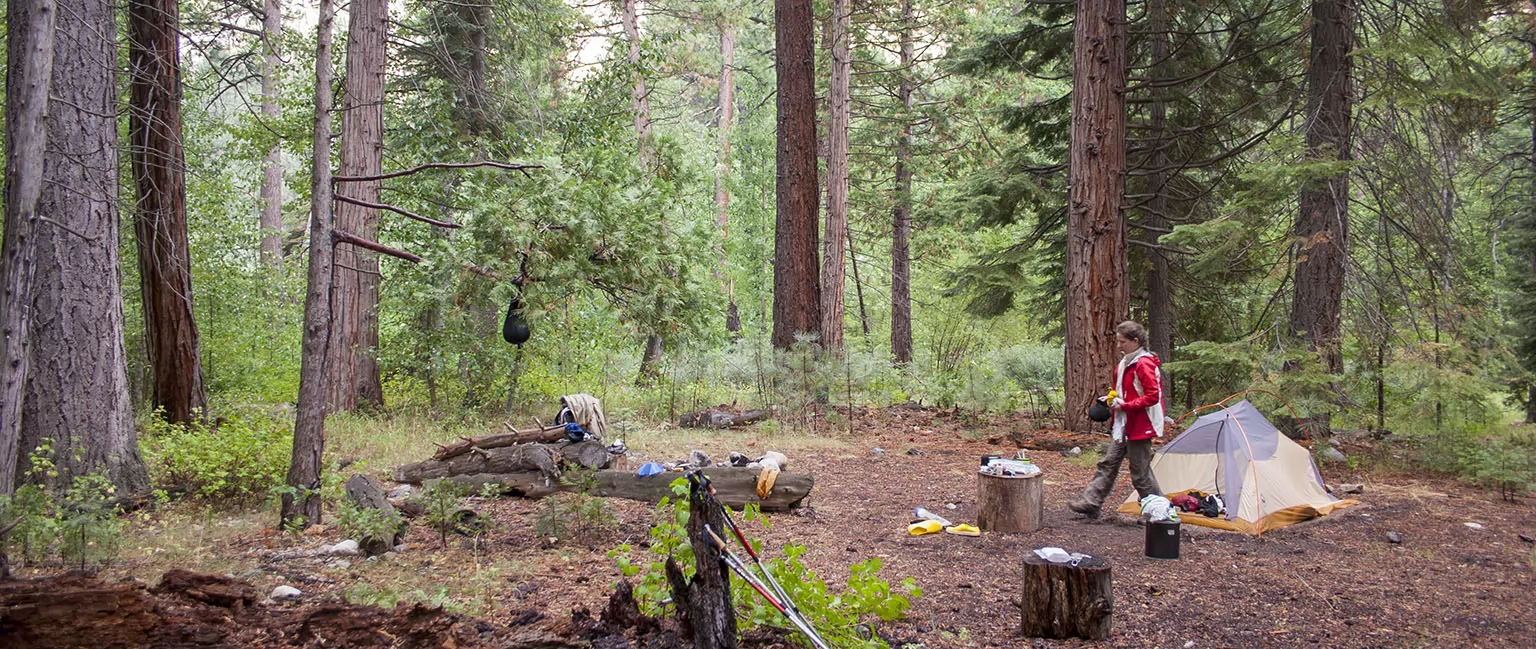
Intro
Our backpacking gear includes a few items we consider "luxury". They may not be essential for survival, but the added comfort or function they provide justifies their weight – at least for us. The biggest such item by far is my DSLR camera that weighs over 3 pounds. Also, we almost always pack a few pieces of fresh fruit or vegetables to have a few bits of non-rehydrated food once in a while. Do you know how good half an apple tastes on day five of a trek?
Then there's the shower. Strictly speaking, it's not necessary. It's possible to wash your hands and your body far away from the water by other means. However, the 10-liter (~2.5 gallon) Sea to Summit Pocket Shower is very practical for these purposes, while weighing 3 ounces.
At the beginning, we took an Advanced Elements 2.5-gallon solar shower with us. It was pretty foolish, I admit, weighing almost a pound. The huge upside was that half of it is see-through plastic, so placed in the sun it warms up very quickly. We actually took almost-hot showers with it in the middle of nowhere.
When it broke, I realized there's way for improvement here, especially as far as weight goes. The STS shower was an obvious choice.

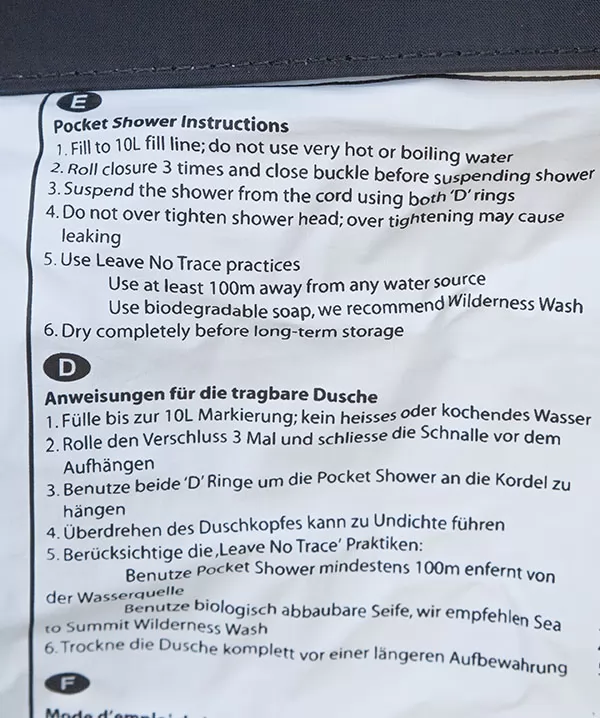
The Shower
The entire shower is one big black bag with a small showerhead on the lower end and completely open on the upper end. However, this upper end is reinforced with some more plastic and it has a buckle lock on the sides and two rings. It also comes with a thin but strong rope for hanging by those rings.
After filling up the shower, you roll the top strip a few times and then secure it with the buckle. This way the shower's top is closed and the upper part becomes a handle. We never use the rings, instead hang the shower by the handle (see pictures). Works like a charm.
Filling up the shower can be a bit tricky sometimes, especially if access to the body of water is limited. The upper end makes for a huge opening, so if there's flowing water and you can place it under a mini waterfall or in a strong stream (just don't lose it), it fills up in seconds.
However, simply dunking it in still water won't fill it up, as the water's pressure on the outside squeezes the bag together and there's no "incentive" (in Nerdspeak: pressure differential) for the water to enter. Depending on the conditions, I either make a sweeping motion to achieve the goal, or - actually, quite often – I take the pot and scoop water into the shower. This also makes it easier to avoid debris getting in and clogging the head.
Important note: the head at the bottom is sturdy, but not indestructible. If the shower is full and it's carelessly placed with the head down or dragged along, the seam around the head will fail relatively quickly.
Dry Bag
If the inside is dry (it can be turned inside-out and dried quickly), the shower bag can be used really well as a dry bag. In fact, this thing, in essence, is Sea-to-Summit's dry bag with the shower head attached. If really bad weather is looming or a deep river crossing is inevitable, it's vital to keep things like the sleeping bag bone dry. The shower can do great double duty for this purpose.
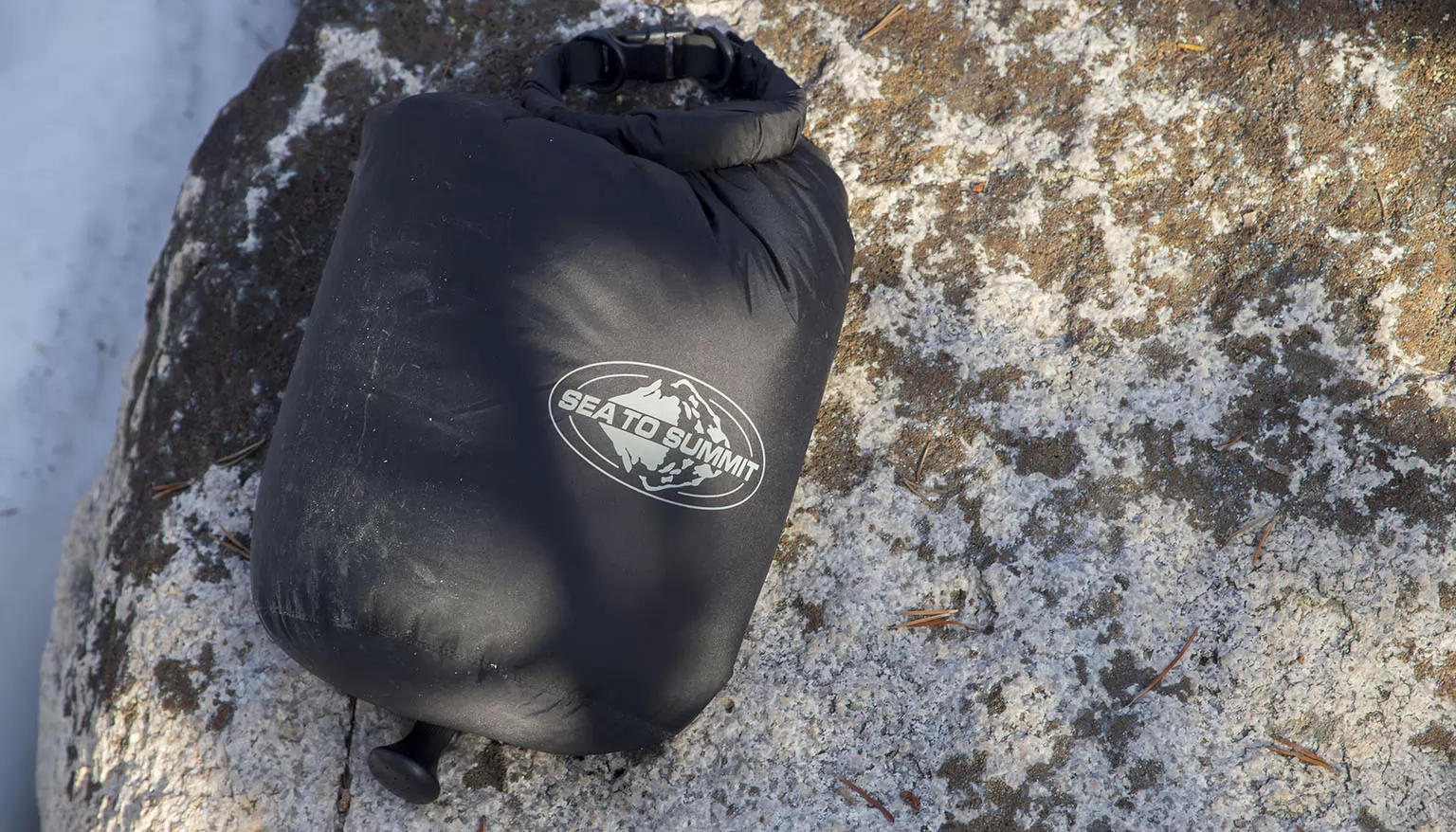

"Hot" Water
Of course, as there's no way for the sun's rays to heat the contents directly, the water won't become anything more than not-so-ice-cold unless left in the sun for a full day. Our usual scenario goes something like this:
We arrive at a campsite sometime in the mid-afternoon. We settle down, pitch the tent, lay out the sleeping bag so it's not compressed (conserves lifespan of the insulation).
Then we fill the shower, hang it from a tree, and using a bit of Dr. Bronner's Pure-Castile soap, we wash the sunscreen and dust off our hands and faces. Next, we fill up the shower again and leave it on a rock in full sun so the water warms up a bit. Usually this means only a few degrees, but there's a big difference between ice-cold and just cold water splashing on you.
If there's time and there's a nice lake or well-flowing stream, we often get in the water for a quick swim to get ourselves wet and to wash most of the dirt and sweat off. Mind that the sunscreen is already gone.
If the weather is still OK and we feel like it, we walk naked and dripping to the shower and we wash ourselves with soap, rinsing off into the ground.
Obviously, often none of this works out, sometimes it's too late, or it's windy or raining, or there's not enough water, or all of the above.
According to the specs, the full bag will give about 8 and a half minutes of water flow with the head fully open. We never timed this, but for the quick showers we take, one fill is enough for both of us with some water to spare.
Backcountry Water Use
I've seen idiots way too many times happily washing themselves or doing dishes right into the river or lake. Please remember to perform any of that at least 100 feet away from any water source – if possible, much further. The chemicals in soap, dishwashing liquid, sunscreen, mosquito repellent, all contaminate the water sources – no matter how eco-friendly or biodegradable they're labeled.
Summary
This is a great little shower. Sturdy, compact, useful. STS customer service is excellent. Once we had a problem with one of these and then with a cup they make. The folks at their HQ helped us out very quickly and efficiently.



